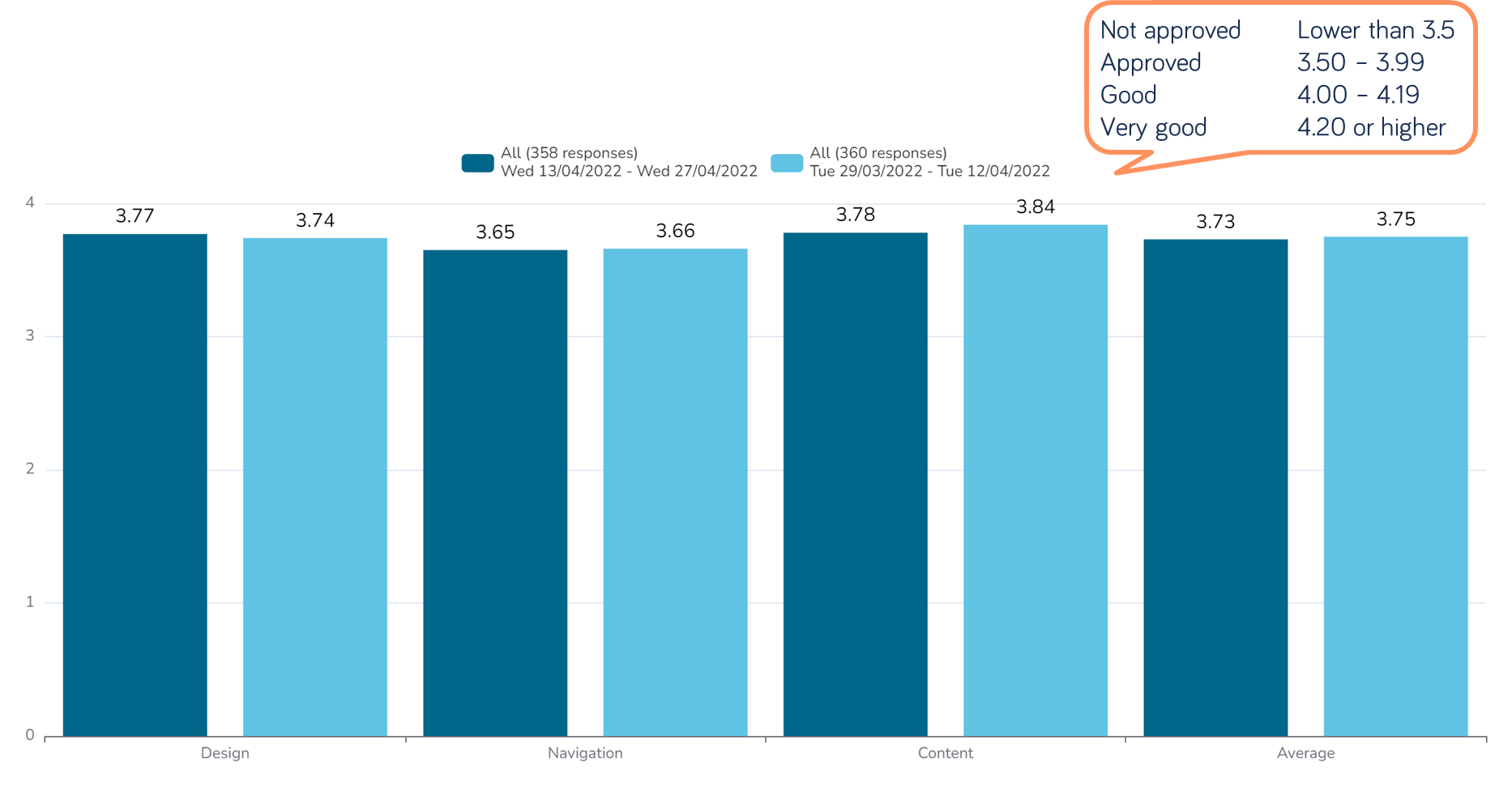This is a quick overview of how find score, rating, and NPS results are calculated and which scores are good.
KPIs, Key Performance Indicators, are measurements of the user experience on your website, but they can also be used to evaluate changes you've made to your website. We offer three KPIs: Find score, Ratings, and NPS. The KPIs differ from the other questions in your survey as the results are calculated and presented as scores. In this article, we'll go through how they are calculated and what scores are good.
Find score
The find score is a measurement of the visitors' success on your website. Did they find what they are looking for? Did they manage to do what they wanted?
The score is calculated by subtracting the share of "No" from the share of "Yes". The score can be anything between -100 and +100, but it is rarely negative. In the example below, 17 is subtracted from 53 to get the score 36.

We have a grading scale for all our KPIs, and for the find score, 50 and above is an approved score. That means that the find score in the example above is not approved. For the score to be 'good' it has to be at least 60, and to be 'very good' at least 70.
In the example above, the share of "No" is 17%. We recommend a maximum share of 10% "No". If your share of "No" is too high, it indicates that you have problems with the navigation or information on your website.
A high share of "No" and "Partly" can also indicate that your survey has the wrong trigger time, and you can read more about trigger times here.
Ratings
The most common KPI question is the rating question. Ratings are a measurement of the visitors' satisfaction. Can they navigate easily? Do they like the design? Are they happy with the content?
For the rating questions, the respondents usually get text options, such as "Very poor" to "Very good", but these options are coded with values and are in effect rating scales of 1-5. The results can therefore be anywhere between 1 and 5.

The ratings are calculated as mean ratings (the sum divided by the number of answers). An approved rating is from 3.50, 'good' is from 4.00, and 'very good' is 4.20 or higher.
In the example above, the ratings for the website are approved, but the visitors are more satisfied with the content and the design than they are with the navigation. The navigation should therefore be prioritized in order to improve the website's average rating.
NPS
The Net Promoter Score, or NPS, is a measurement of the visitors' willingness to recommend the website. Are the visitors loyal to your website? Are they loyal to your company?
Although the NPS is a question answered on a scale from 0 to 10, it isn't calculated as a rating question, but instead as the find score. Those that answer 0-6 are considered Detractors, 7-8 are Passives, and 9-10 are Promoters. The score is calculated by subtracting the share of Detractors from the share of Promoters. In the example below, 35 is subtracted from 32 to get the NPS -3. Unlike for find scores, it is not uncommon with a negative NPS.

Even though the NPS is calculated the same way as the find score, and can therefore also be anywhere between -100 and +100, the grading scale is very different. An approved NPS is from 0, while it is considered 'good' from 30, and 'very good' from 50.
In the example above, the NPS is negative. To better understand why the respondents are unwilling to recommend, you can add a follow-up question, asking the respondents to elaborate. However, the responses are usually very similar to the text answers for what the respondents couldn't find (follow-up to find question) and what they would like you to improve. It is therefore possible to use the other questions in the survey to identify the problem areas that result in a low NPS.